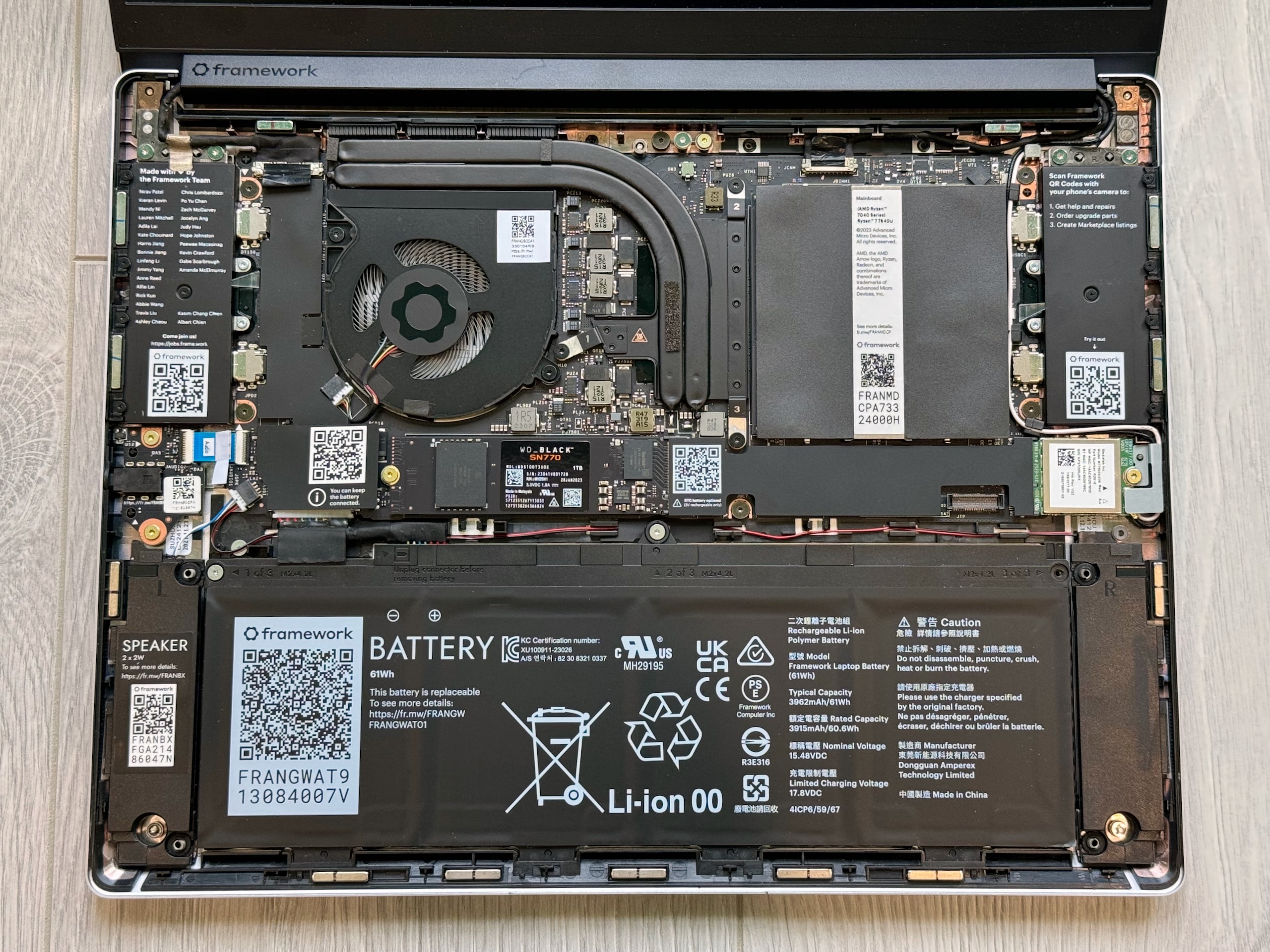
| Specs at a glance: Framework Laptop 13 (2023) | |
|---|---|
| OS | Windows 11 22H2 |
| CPU | AMD Ryzen 7 7840U (8-cores) |
| RAM | 32GB DDR5-5600 (upgradeable) |
| GPU | AMD Radeon 780M (integrated) |
| SSD | 1TB Western Digital Black SN770 |
| Battery | 61 WHr |
| Display | 13.5-inch 2256x1504 non-touchscreen in glossy or matte |
| Connectivity | 4x recessed USB-C ports (2x USB 4, 2x USB 3.2) with customizable "Expansion Card" dongles, headphone jack |
| Price as tested | $1,679 pre-built, $1,523 DIY edition with no OS included |
The Framework Laptop 13 is back again.
My third review of this laptop is probably the one that I (and many Framework-curious PC buyers) have been the most interested to test, as the company has finally added an AMD Ryzen option to the repair-friendly portable. Updates to the Intel version of the Framework Laptop have boosted CPU performance, but its graphics performance has been at a standstill since the Framework Laptop originally hit the scene in mid-2021.
Even AMD's latest integrated graphics won't make a thin-and-light laptop a replacement for a gaming PC with dedicated graphics, but a bit more GPU power makes the Framework Laptop that much more versatile, making it easier to play games at reasonable resolutions and settings than it is on Intel's aging Iris Xe graphics hardware.
Whether you hopped on the Framework train early and have been waiting for a motherboard that felt like a true all-around upgrade or you've been on the fence about buying your first Framework Laptop, the new Ryzen version makes a good case for itself. If you want to order one, there's currently a backlog—all versions are shipping at an unspecified date in "Q4."
Meet the Ryzen-powered Framework 13
I won't spend a lot of time talking about the design of the Framework Laptop 13 again, except to say that it remains a competent ultraportable, and there's nothing that feels dated or clunky about its design now that didn't already feel a little dated and clunky two years ago (the relatively thick display bezel is the main culprit here). Another laptop in this category we generally like, Lenovo's ThinkPad X1 Carbon, has been using the same basic design for years, so it's not like Framework is in danger of falling behind in a chaotic and fast-paced industry.
The Ryzen version of the mainboard looks mostly identical to the Intel version, given that it needs to fit in all the same cases with all the same connectors. It dropped directly into the same case I've also used for the Intel versions of the Framework Laptop, and moving from Intel to AMD is as easy as it is in a desktop tower with standard parts.























 Loading comments...
Loading comments...
